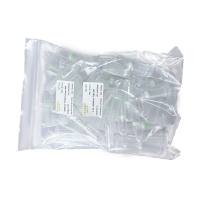Origin and Progress of Nuclear Transfer in Nonmammalian Animals
互联网
611
This chapter traces the orgin and progress of nuclear transfer that later became the paradigm for cloning animals. Classic studies in cytology, embryology, or genetics spanning more than five centuries that led to nuclear transfers in unicellular animals and to those in oocytes of insects, fish and amphibians are reviewed. The impetus for the development of successful nuclear transfers in amphibian oocytes in 1952 was to determine whether or not differentiated somatic cell nuclei are developmentally equivalent to zygote nuclei. Experiments in amphibians demonstrated several important results: (1) specialized somatic cell nuclei are extensively multipotent; (2) fertile adult amphibians can be cloned from embryonic and larval nuclei; (3) serial cloning expands the number of clones; (4) transplanting nuclei into oocyte cytoplasm induces reprogramming of their gene function; and (5) amphibian cloning became the model for cloning mammals. Subsequent studies in mice, a more technically favorable species, revealed that specialized cell nuclei are equivalent to zygote nuclei.









